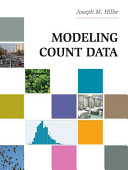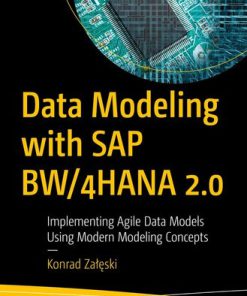Modeling Count Data 1st Edition by Hilbe 9781139985369 1139985361
$50.00 Original price was: $50.00.$25.00Current price is: $25.00.
Modeling Count Data 1st Edition Hilbe – Ebook Instant Download/Delivery ISBN(s): 9781139985369, 1139985361

Product details:
- ISBN 10:1139985361
- ISBN 13: 9781139985369
- Author: Hilbe
Modeling Count Data
Table contents:
Chapter 1 Varieties of Count Data
Some Points of Discussion
1.1 What Are Counts?
1.2 Understanding a Statistical Count Model
1.2.1 Basic Structure of a Linear Statistical Model
1.2.2 Models and Probability
1.2.3 Count Models
1.2.4 Structure of a Count Model
1.3 Varieties of Count Models
1.4 Estimation – the Modeling Process
1.4.1 Software for Modeling
1.4.2 Maximum Likelihood Estimation
1.4.3 Generalized Linear Models and IRLS Estimation
1.5 Summary
Chapter 2 Poisson Regression
Some Points of Discussion
2.1 Poisson Model Assumptions
2.2 Apparent Overdispersion
2.3 Constructing a “True” Poisson Model
2.4 Poisson Regression: Modeling Real Data
2.5 Interpreting Coefficients and Rate Ratios
2.5.1 How to Interpret a Poisson Coefficient and Associated Statistics
2.5.2 Rate Ratios and Probability
2.6 Exposure: Modeling over Time, Area, and Space
2.7 Prediction
2.8 Poisson Marginal Effects
2.8.1 Marginal Effect at the Mean
2.8.2 Average Marginal Effects
2.8.3 Discrete Change or Partial Effects
2.9 Summary
Chapter 3 Testing Overdispersion
Some Points of Discussion
3.1 Basics of Count Model Fit Statistics
3.2 Overdispersion: What, Why, and How
3.3 Testing Overdispersion
3.3.1 Score Test
3.3.2 Lagrange Multiplier Test
3.3.3 Chi2 Test: Predicted versus Observed Counts
3.4 Methods of Handling Overdispersion
3.4.1 Scaling Standard Errors: Quasi-count Models
3.4.2 Quasi-likelihood Models
3.4.3 Sandwich or Robust Variance Estimators
3.4.4 Bootstrapped Standard Errors
3.5 Summary
Chapter 4 Assessment of Fit
Some Points of Discussion
4.1 Analysis of Residual Statistics
4.2 Likelihood Ratio Test
4.2.1 Standard Likelihood Ratio Test
4.2.2 Boundary Likelihood Ratio Test
4.3 Model Selection Criteria
4.3.1 Akaike Information Criterion
4.3.2 Bayesian Information Criterion
4.4 Setting up and Using a Validation Sample
4.5 Summary and an Overview of the Modeling Process
4.5.1 Summary of What We Have Thus Far Discussed
Chapter 5 Negative Binomial Regression
Some Points of Discussion
5.1 Varieties of Negative Binomial Models
5.2 Negative Binomial Model Assumptions
5.2.1 A Word Regarding Parameterization of the Negative Binomial
5.3 Two Modeling Examples
5.3.1 Example: rwm1984
5.3.2 Example: medpar
5.4 Additional Tests
5.4.1 General Negative Binomial Fit Tests
5.4.2 Adding a Parameter – NB-P Negative Binomial
5.4.3 Modeling the Dispersion – Heterogeneous Negative Binomial
5.5 Summary
Chapter 6 Poisson Inverse Gaussian Regression
Some Points of Discussion
6.1 Poisson Inverse Gaussian Model Assumptions
6.2 Constructing and Interpreting the PIG Model
6.2.1 Software Considerations
6.2.2 Examples
6.3 Summary – Comparing Poisson, NB, and PIG Models
Chapter 7 Problems with Zeros
Some Points of Discussion
7.1 Counts without Zeros – Zero-Truncated Models
7.1.1 Zero-Truncated Poisson (ZTP)
7.1.2 Zero-Truncated Negative Binomial (ZTNB)
7.1.3 Zero-Truncated Poisson Inverse Gaussian (ZTPIG)
7.1.4 Zero-Truncated NB-P (ZTNBP)
7.1.5 Zero-Truncated Poisson Log-Normal (ZTPLN)
7.1.6 Zero-Truncated Model Summary
7.2 Two-Part Hurdle Models
7.2.1 Poisson and Negative Binomial Logit Hurdle Models
7.2.2 PIG-Logit and Poisson Log-Normal Hurdle Models
7.2.3 PIG-Poisson Hurdle Model
7.3 Zero-Inflated Mixture Models
7.3.1 Overview and Guidelines
7.3.2 Fit Tests for Zero-Inflated Models
7.3.3 Fitting Zero-Inflated Models
7.3.4 Good and Bad Zeros
7.3.5 Zero-Inflated Poisson (ZIP)
7.3.6 Zero-Inflated Negative Binomial (ZINB)
7.3.7 Zero-Inflated Poisson Inverse Gaussian (ZIPIG)
7.4 Summary – Finding the Optimal Model
Chapter 8 Modeling Underdispersed Count Data – Generalized Poisson
Some Points of Discussion
Chapter 9 Complex Data: More Advanced Models
Types of Data and Problems Dealt with in This Chapter
9.1 Small and Unbalanced Data – Exact Poisson Regression
9.2 Modeling Truncated and Censored Counts
9.2.1 Truncated Count Models
9.2.2 Censored Count Models
9.2.3 Poisson-Logit Hurdle at 3 Model
9.3 Counts with Multiple Components – Finite Mixture Models
9.4 Adding Smoothing Terms to a Model – GAM
9.5 When All Else Fails: Quantile Count Models
9.6 A Word about Longitudinal and Clustered Count Models
9.6.1 Generalized Estimating Equations (GEEs)
9.6.2 Mixed-Effects and Multilevel Models
9.7 Three-Parameter Count Models
9.8 Bayesian Count Models – Future Directions of Modeling?
9.9 Summary
People also search:
modeling count data
modeling count data pdf
modeling count data hilbe pdf
modeling count data in r
modeling count data negative binomial
You may also like…
Mathematics - Mathematical Statistics
Applied Categorical and Count Data Analysis: Second Edition Wan Tang & Hua He & Xin M. Tu
Computers - Databases
NoSQL and SQL Data Modeling: Bringing Together Data, Semantics, and Software First Edition Hills
Engineering - Industrial Engineering & Materials Science
Data-Driven Evolutionary Modeling in Materials Technology 1st Edition Nirupam Chakraborti
Computers - Organization and Data Processing
Expert Data Modeling with Power BI 2nd Edition by Soheil Bakhshi ISBN 1803246243 9781803246246
Mathematics - Mathematical Statistics
Computers - Computer Science
Computers - Computer Science
Computers - Algorithms and Data Structures
Reliability Engineering: Data analytics, modeling, risk prediction 1st Edition Bracke












